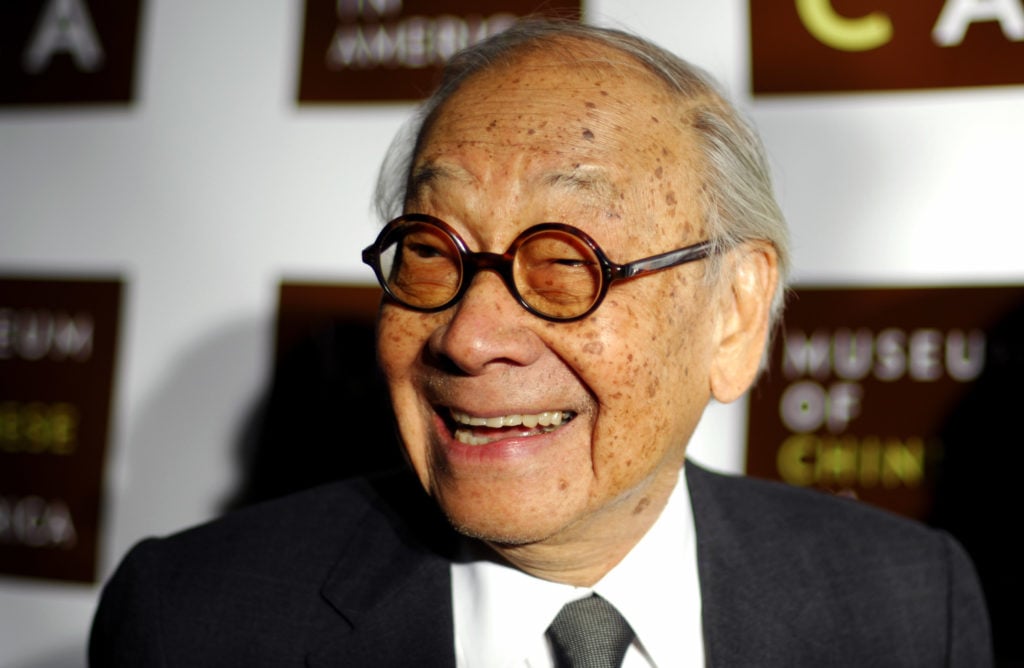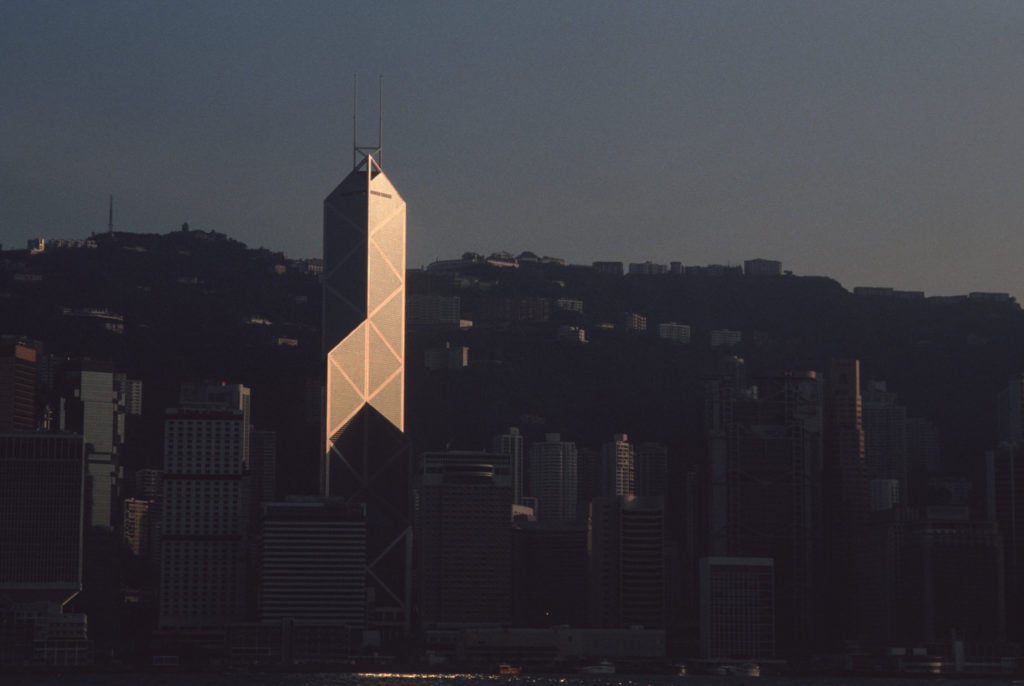People
Architect I.M. Pei, Who Designed Some of the World’s Most Mesmerizing Museums, Has Died at 102
Pei, known for the Louvre Pyramid and the Bank of China Tower in Hong Kong, is recognized as one of the most influential architects of all time.

Pei, known for the Louvre Pyramid and the Bank of China Tower in Hong Kong, is recognized as one of the most influential architects of all time.

Taylor Dafoe

I.M. Pei, the Pritzker Prize-winning architect behind the glass pyramid entrance of the Louvre in Paris and the East Building of the National Gallery of Art in Washington, DC, died last night at age 102. The news was confirmed to artnet News by a representative from his firm, Pei Cobb Freed & Partners.
Over his long career, Pei emerged as one of the most respected and sought-after architects in the world. His work was a study in contrasts: ancient and modern, understated and wildly ambitious, inspired by both East and West. Over six decades, Pei won nearly every major award in his field, including the Pritzker Prize in 1983.
Pei was born in Guangzhou, China, in 1917 to a banker father and artistic mother. He grew up in Hong Kong and Shanghai before moving to the United States at age 17 to enroll in architecture school. After graduating from the Massachusetts Institute of Technology, Pei attended Harvard’s famed Graduate School of Design, where he studied with Bauhaus master Walter Gropius.

The Louvre Pyramid. (Photo by Chesnot/Getty Images)
Soon after he graduated, he joined the mega-developer Webb & Knapp before founding his own firm, I.M. Pei & Associates, in 1955. Early projects included the Mile High Center in Denver, Colorado, in 1956. The following decade, Jacqueline Onassis recruited Pei to design the Presidential Library of John F. Kennedy, a project that would span 16 years and multiple locations.
By the time it was finally completed in 1979, Pei was a veritable star, with major projects such as the National Gallery of Art’s East Building and Dallas City Hall to his name. His design of the Mesa Laboratory at the National Center for Atmospheric Research in the city of Boulder, completed in 1967, is today recognized as a masterpiece.
Pei’s buildings are diverse in scale and material; unlike many of today’s starchitects, one might not necessarily be able to identify his handiwork immediately. This was intentional. “I don’t envy the architects who have such a strong stylistic stamp that clients would be disappointed if they do not get the same ‘look’ in their projects,” he once said. “I think I have greater freedom.”
Nevertheless, there are common threads: his designs share an interest in transparency, geometry, and light. “It is good to learn from the ancients,” Pei told the Guardian in a 2010 interview. “I’m a bit of an ancient myself. They had a lot of time to think about architecture and landscape. Today, we rush everything, but architecture is slow, and the landscapes it sits in even slower. It needs the time our political systems won’t allow.”

The Bank of China Tower in Central Hong Kong. The 70 story building was designed by I.M. Pei. (Photo by Gerhard Joren/LightRocket via Getty Images)
One of Pei’s best-known designs, the metal-and-glass pyramid towering above the main courtyard of the Louvre, was completed in 1989. While at first met with polarized opinions, today it is recognized as an iconic symbol of Paris.
After completing the Bank of China Tower in Hong Kong in 1990, Pei retired from his full-time architectural practice. Still, he continued to take on work well into the late 2000s, and some of his most recognizable buildings were built during this time, including the Rock and Roll Hall of Fame (1995), the Miho Museum in Kyoto, Japan (1997), and the Museum of Islamic Art in Doha, Qatar (2008).

I.M. Pei, Museum of Islamic Arts (2008). Courtesy of Shahin Olakara via Wikimedia Commons.
Pei was known as an intense researcher. Although he was not a rock-and-roll fan before he began the Hall of Fame project, he prepared by attending concerts with Jann Wenner, the publisher of Rolling Stone, according to the New York Times. Before he began work on the Museum of Islamic Art, he read a biography of the Prophet Muhammad and toured the world’s great sites of Islamic architecture.